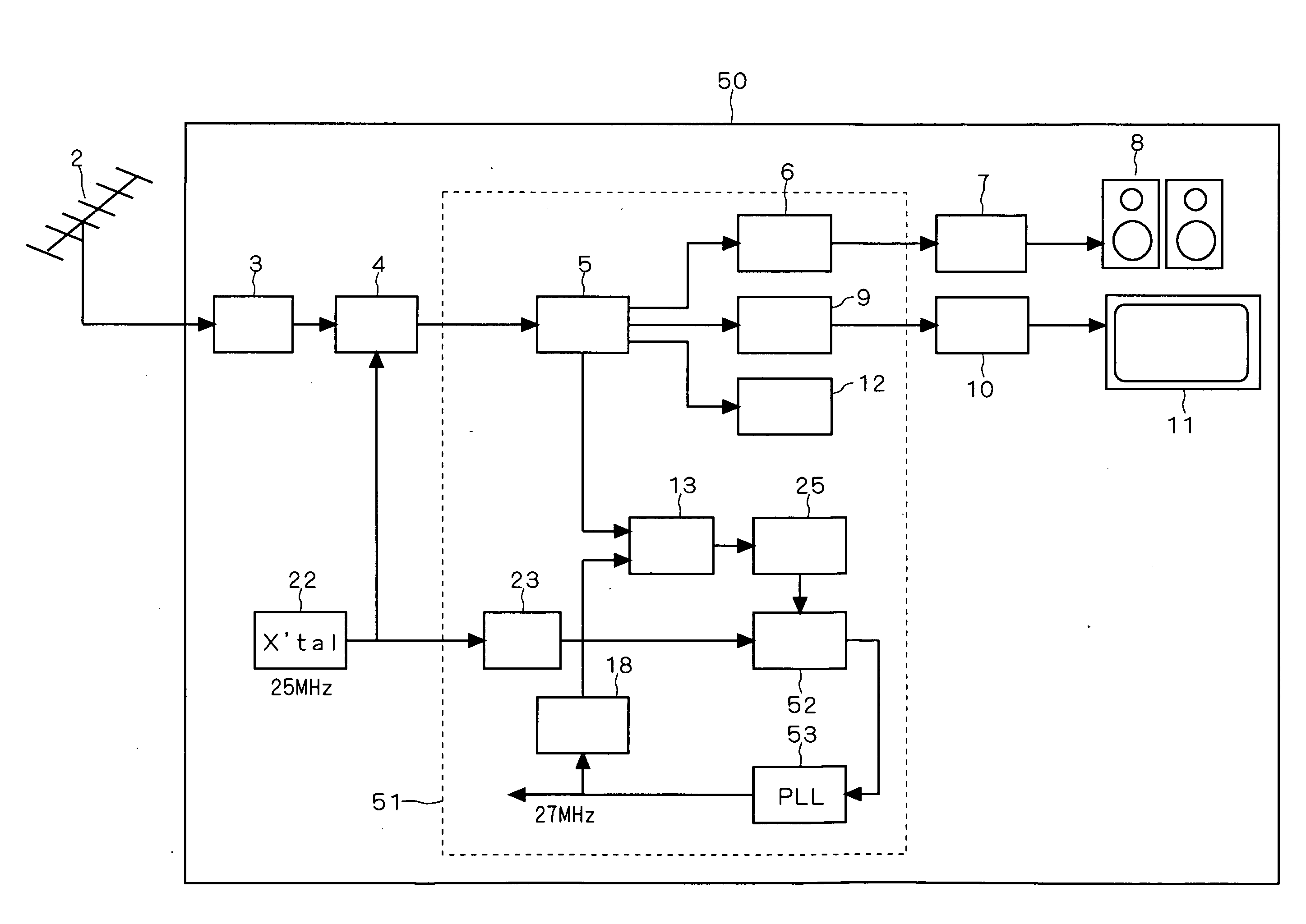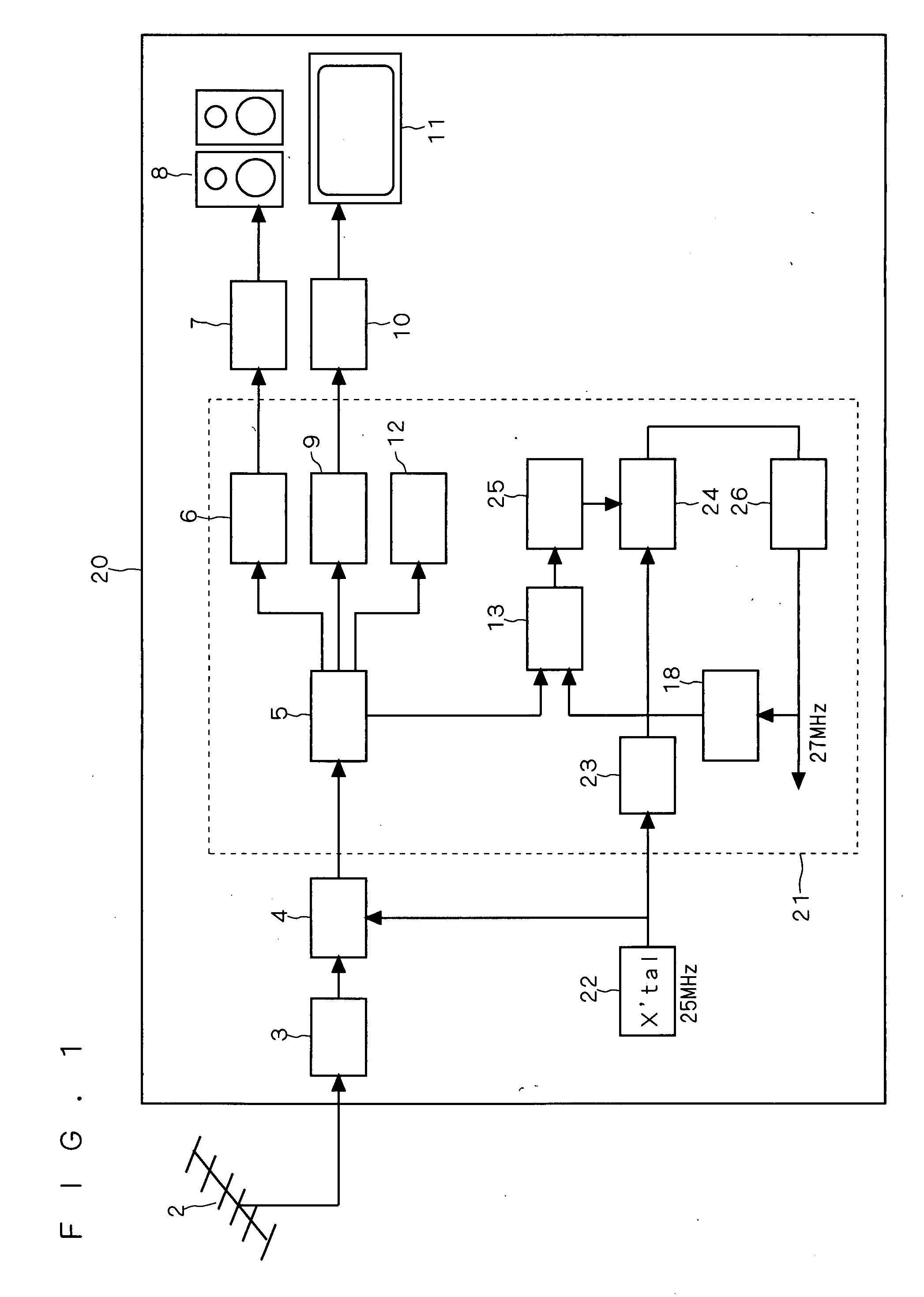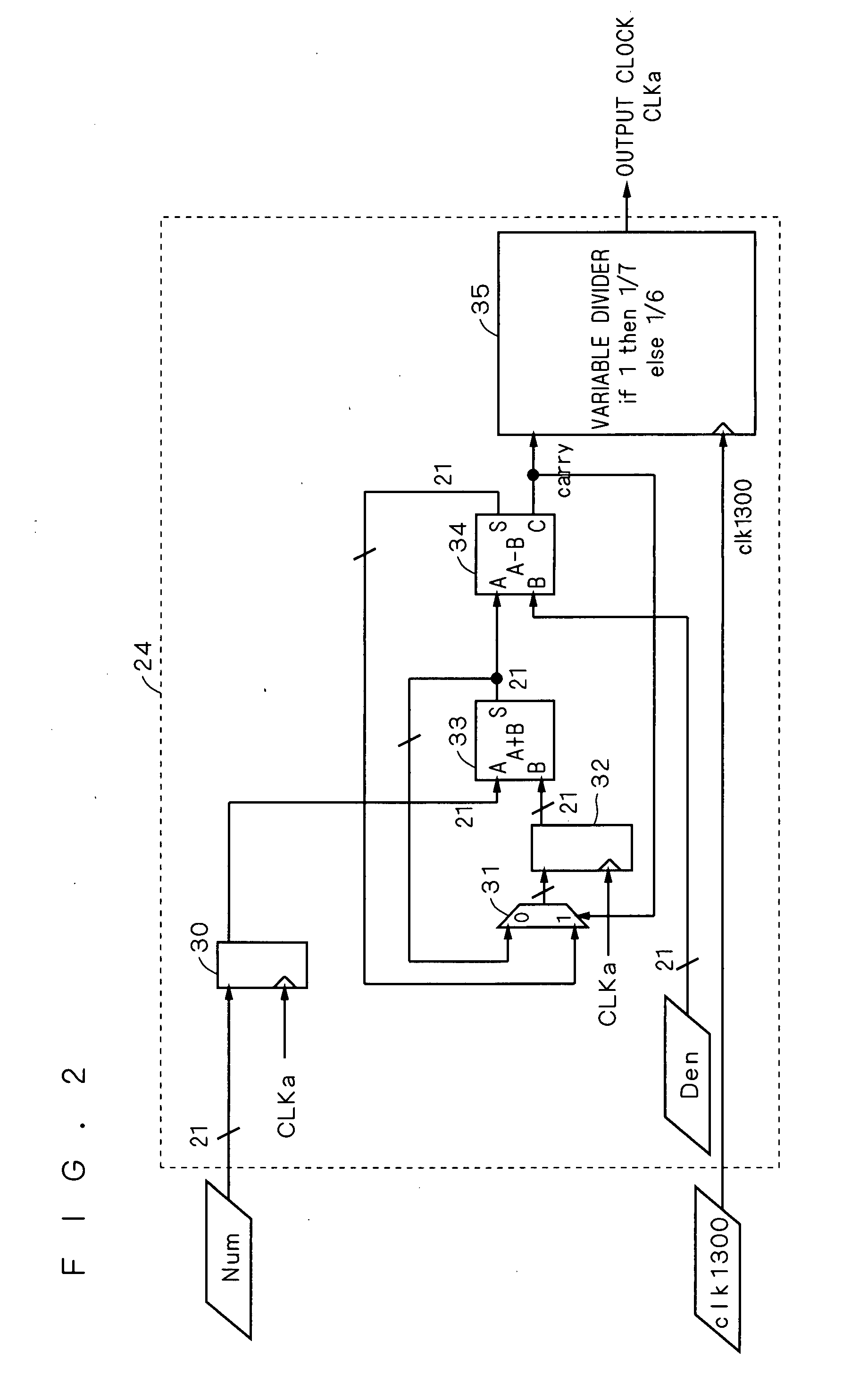Digital broadcasting receiving unit and digital broadcasting system
- Summary
- Abstract
- Description
- Claims
- Application Information
AI Technical Summary
Benefits of technology
Problems solved by technology
Method used
Image
Examples
first embodiment
[0025]FIG. 1 is a block diagram showing the structure of a receiving unit 20 according to this embodiment.
[0026]As shown in FIG. 1, the receiving unit 20 comprises an antenna 2, a tuner 3, a demodulator 4, a digital analog (DA) converter 7, a speaker 8, a display circuit 10, a display device 11 (for example, liquid crystal panel), a decoder LSI (large scale integration) 21, and a crystal oscillator (which can be grasped as fixed frequency oscillator) 22.
[0027]The decoder LSI 21 comprises a system decoder (which can be grasped as reference time information detecting portion) 5, an audio decoder 6, a video decoder 9, a control CPU (central processing unit) 12, a phase comparator (which can be grasped as a difference detector) 13, a reference counter (can be grasped as a time information generating portion) 18, a multiplier 23, a variable digital dividing circuit (which can be grasped as a variable digital dividing portion) 24, a division ratio control circuit (which can be grasped as ...
second embodiment
[0081]FIG. 4 is a block diagram showing the structure of a digital broadcasting receiving unit (hereinafter referred to as receiving unit) 40 according to this embodiment. The receiving unit 40 of this embodiment is different from the receiving unit 20 of the first embodiment in following points.
[0082]If paying attention to the structures of the decoder LSI 21 in FIG. 1 and a decoder LSI 41 in FIG. 4, according to this embodiment, a PLL circuit 42 is inserted in between the variable digital dividing circuit 24 and the dividing circuit 26. The other structure is the same between both the receiving units 20 and 40.
[0083]The PLL circuit 42 outputs a clock (having a synchronous frequency) synchronous with a clock outputted from the variable digital dividing circuit (which can be grasped as variable digital dividing portion) 24. Then, the clock having the synchronous frequency is inputted to the reference counter (which can be grasped as a time information generating portion) 18 through ...
third embodiment
[0090]FIG. 5 is a block diagram showing the structure of a digital broadcasting receiving unit (hereinafter referred to as receiving unit) 50 of this embodiment. The receiving unit 20 of the first embodiment is different from the receiving unit 50 of this embodiment in following points.
[0091]Attention is paid to the structures of the decoder LSI 21 in FIG. 1 and a decoder LSI 51 in FIG. 4. First, the variable digital dividing circuit 24 and a variable digital dividing circuit 52 are different from each other in their internal structure. In the meantime, the internal structure of the variable digital dividing circuit 52 will be described with reference to FIG. 6.
[0092]In the first embodiment, the dividing circuit 26 is disposed between the variable digital dividing circuit 24 and the reference counter (which can be grasped as time information generating portion) 18. Contrary to this, according to this embodiment, a PLL circuit 53 is disposed between the variable digital dividing circ...
PUM
 Login to View More
Login to View More Abstract
Description
Claims
Application Information
 Login to View More
Login to View More - R&D
- Intellectual Property
- Life Sciences
- Materials
- Tech Scout
- Unparalleled Data Quality
- Higher Quality Content
- 60% Fewer Hallucinations
Browse by: Latest US Patents, China's latest patents, Technical Efficacy Thesaurus, Application Domain, Technology Topic, Popular Technical Reports.
© 2025 PatSnap. All rights reserved.Legal|Privacy policy|Modern Slavery Act Transparency Statement|Sitemap|About US| Contact US: help@patsnap.com



